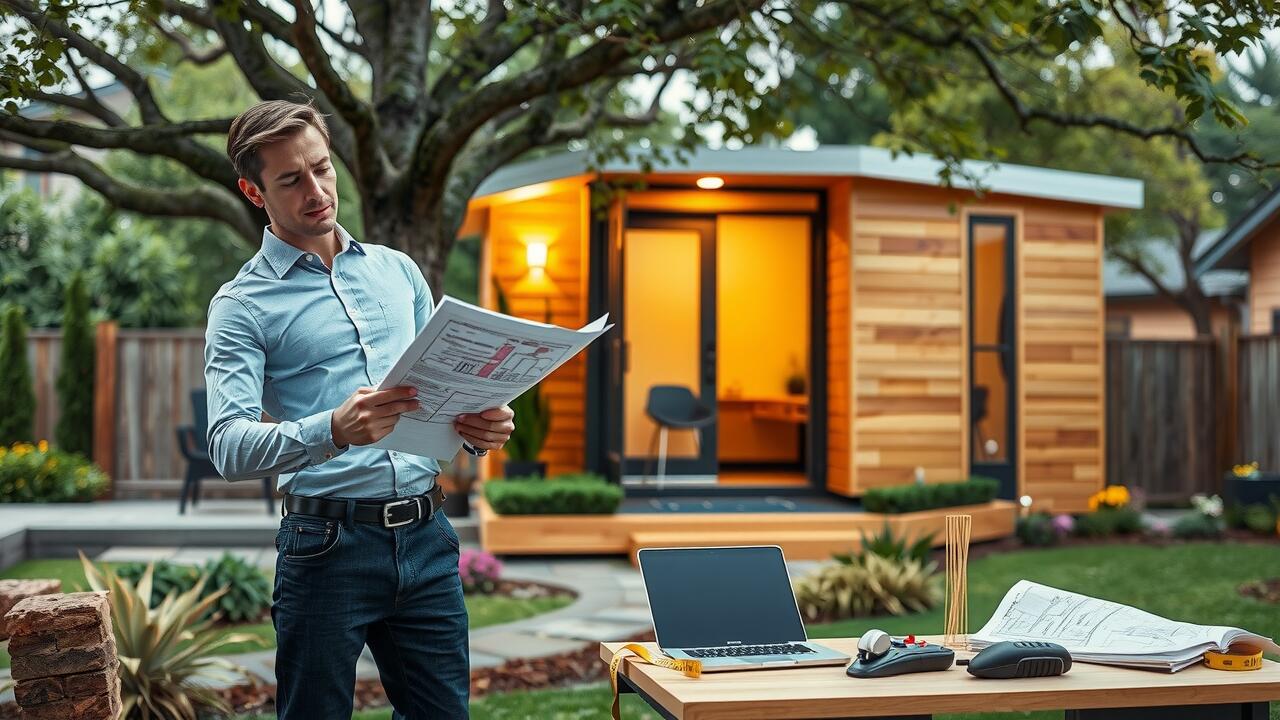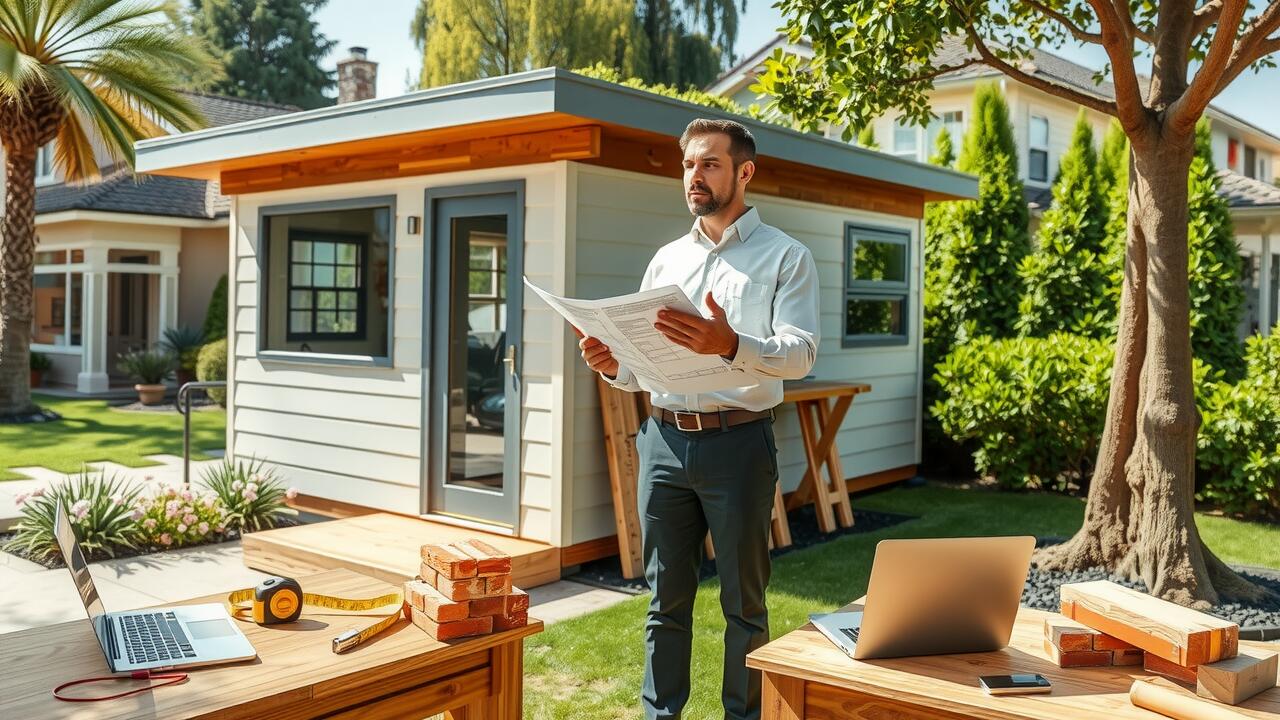
Table Of Contents
Types of ADUs
Accessory Dwelling Units (ADUs) come in various types, each offering unique advantages depending on the property owner’s needs. Attached ADUs share a wall with the primary residence, often utilizing existing plumbing and electrical systems. This type can be a cost-effective solution, as it may require fewer resources to integrate into the main house. Detached ADUs stand alone on the property, providing more privacy and independence for tenants or guests. Garage conversions also provide an economical option, transforming existing garages into livable spaces while minimizing construction costs.
When considering an ADU in Waltz, Santa Clarita, homeowners should evaluate local zoning regulations and available space. Each type of ADU can vary significantly in terms of construction costs and potential return on investment. Factors such as size, design, and materials play a crucial role in the overall budget. By assessing these aspects early in the planning process, property owners can make informed decisions that align with their financial goals and property usage intentions.
Attached, Detached, and Garage Conversions
Attached ADUs are built within the existing structure of a home. This option often allows for a more seamless integration with the main residence, minimizing the need for extensive site preparation. An ADU in Honby, Santa Clarita, can boost property value while providing additional living space without sacrificing yard space. The costs can be more manageable since the utilities may already be connected to the primary home.
Detached ADUs are separate structures placed on the same property. This type can offer greater flexibility in design and use, accommodating renters, guests, or even home offices. A garage conversion to an ADU is another practical approach. It transforms an existing underutilized space into a functional living area, making it an economically sound choice in regions like Santa Clarita. With thoughtful planning, these options can significantly enhance a property’s functionality while remaining cost-effective.
Budgeting for Your ADU Project
Creating a financial plan for an accessory dwelling unit (ADU) in Waltz, Santa Clarita requires careful consideration of various costs associated with the project. Start by estimating expenses related to permits, design, materials, and labor. Research local building codes and regulations to ensure compliance, as these may affect the overall budget. To keep costs down, consider using cost-effective materials and exploring pre-designed plans that offer a balance of affordability and functionality.
When budgeting for your ADU in Waltz, Santa Clarita, it’s essential to think about potential hidden costs that may arise during the construction process. These can include unexpected site preparation needs, utility connections, and landscape repairs. It’s wise to allocate a contingency fund, typically around 10-15% of the total budget, to manage any unforeseen expenses efficiently. By planning thoroughly and anticipating possible challenges, you can better prepare yourself for a successful ADU project.
Creating a Realistic Financial Plan
Creating a financial plan for your ADU in Waltz, Santa Clarita involves a detailed approach that accounts for all associated costs. Begin by estimating expenses such as construction, permits, and utilities. Include a buffer for unexpected costs, as renovations can bring surprises. Research local building codes and regulations that might impact your budget. Understanding these factors will provide a clearer picture of the overall financial requirements for your project.
Next, assess your funding sources to determine the best way to finance your ADU. Look into personal savings, home equity loans, and possibly even local grants designed to encourage ADU development. Weighing the pros and cons of each option will help you select a method that aligns with your financial situation. Balancing upfront costs with potential rental income can also influence your decisions as you work to create a sensible financial strategy for your ADU in Waltz, Santa Clarita.
Financing Options Available
When considering financing options for adding an ADU in Plum Canyon, Santa Clarita, it’s important to explore various avenues that cater to different financial situations. Traditional home mortgages can be modified to include the cost of construction, provided that a lender sees potential value in the added living space. Many homeowners opt for personal loans or home equity lines of credit, allowing them to tap into existing equity for funding. Understanding what you qualify for will help streamline the financial planning process.
In addition to conventional loans, grants and local funding opportunities may be available to those looking to finance an ADU in Plum Canyon, Santa Clarita. Various local government programs aim to promote affordable housing and may provide financial assistance or incentives. Researching these options can reveal beneficial partnerships with non-profit organizations or community development initiatives that support responsible growth. Evaluating all available resources ensures a more comprehensive approach to funding your project.
Loans, Grants, and Other Funding Sources
Exploring financing options is crucial when considering the addition of an ADU in Waltz, Santa Clarita. Homeowners often turn to personal loans as a flexible method to fund their project. These loans can cover various costs, from construction to permits. Interest rates might vary, but personal loans typically allow for manageable repayment terms. Some homeowners may also consider home equity loans or lines of credit as viable alternatives, utilizing the value built in their property to finance the ADU.
In addition to loans, various grants and funding programs are designed to support individuals looking to build affordable housing options like ADUs. Local and state governments sometimes offer grants that can ease the financial burden of construction, especially if the project meets specific criteria related to low-income housing or sustainability. Consulting with local housing authorities in Santa Clarita could uncover additional funding sources to help subsidize the costs of your ADU project.
FAQS
What is an ADU?
An Accessory Dwelling Unit (ADU) is a secondary housing unit on a single-family residential lot, which can be attached to the main house, detached, or converted from an existing structure like a garage.
Which type of ADU is the cheapest to build?
Generally, garage conversions tend to be the cheapest option, as they often require fewer permits and modifications compared to building new attached or detached units.
How can I budget effectively for my ADU project?
To budget effectively, start by determining your overall financial limits, researching construction costs, and accounting for permits, materials, and labor. It’s also wise to include a contingency fund for unexpected expenses.
What financing options are available for building an ADU?
Financing options may include personal loans, home equity lines of credit (HELOC), cash-out refinancing, and sometimes local grants or low-interest loans specifically for ADU construction.
Are there any grants available to help fund an ADU?
Yes, some local governments and nonprofit organizations offer grants or financial assistance programs to encourage affordable housing development, including ADUs. It’s best to check with local housing authorities for availability.


